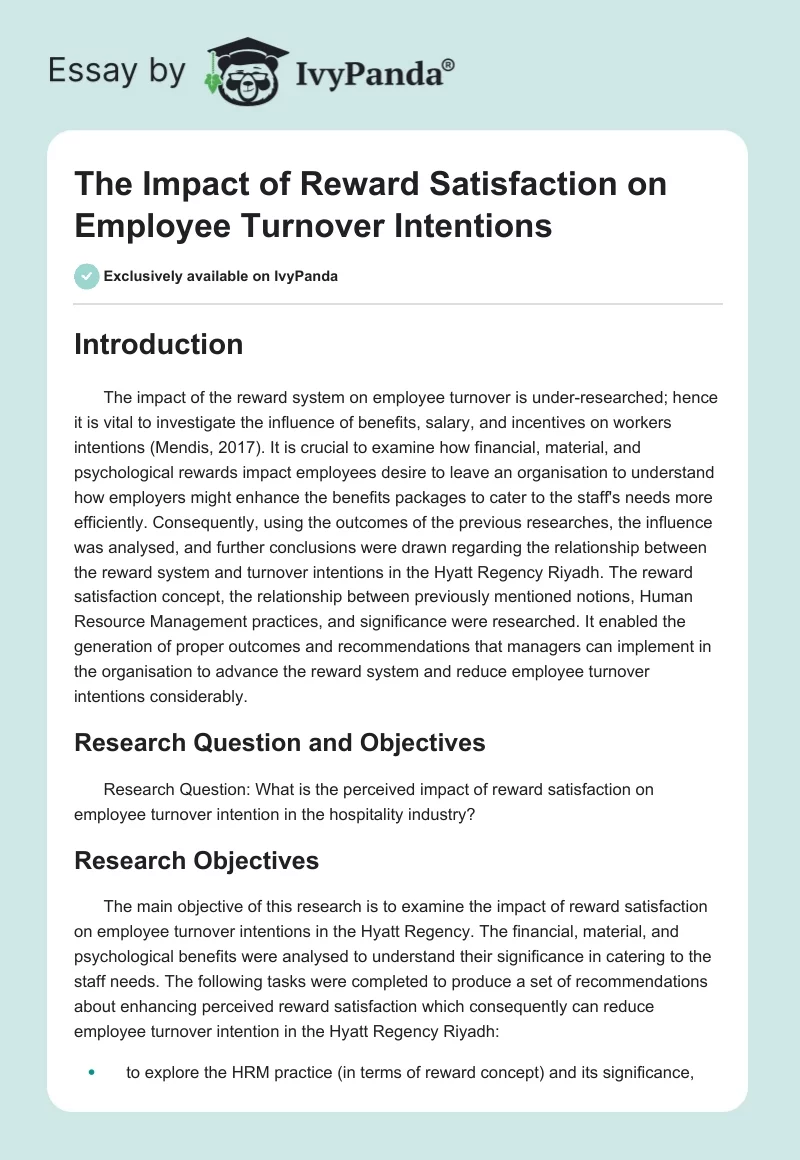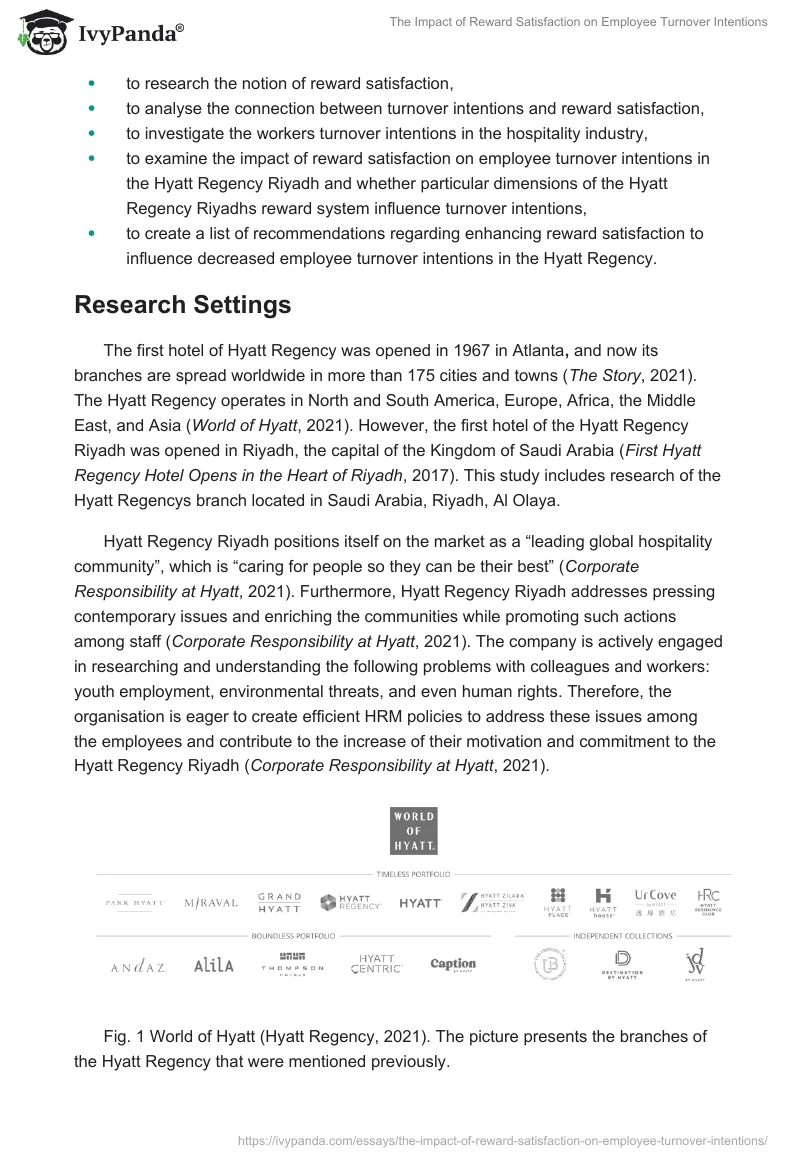Introduction
The impact of the reward system on employee turnover is under-researched; hence, it is vital to investigate the influence of benefits, salary, and incentives on workers’ intentions (Mendis, 2017). It is crucial to examine how financial, material, and psychological rewards impact employees’ desire to leave an organization to understand how employers might enhance the benefits packages to cater to the staff’s needs more efficiently.
Consequently, the influence was analyzed using the previous research outcomes, and further conclusions were drawn regarding the relationship between the reward system and turnover intentions in the Hyatt Regency Riyadh. The reward satisfaction concept, the relationship between previously mentioned notions, Human Resource Management practices, and significance were researched. It enabled the generation of proper outcomes and recommendations that managers can implement to advance the reward system and reduce employee turnover intentions considerably.
Research Question and Objectives
Research Question: What is the perceived impact of reward satisfaction on employee turnover intention in the hospitality industry?
Research Objectives
The main objective of this research is to examine the impact of reward satisfaction on employee turnover intentions in the Hyatt Regency. The financial, material, and psychological benefits were analysed to understand their significance in catering to the staff needs. The following tasks were completed to produce a set of recommendations about enhancing perceived reward satisfaction which consequently can reduce employee turnover intention in the Hyatt Regency Riyadh:
- to explore the HRM practice (in terms of reward concept) and its significance,
- to research the notion of reward satisfaction,
- to analyse the connection between turnover intentions and reward satisfaction,
- to investigate the workers turnover intentions in the hospitality industry,
- to examine the impact of reward satisfaction on employee turnover intentions in the Hyatt Regency Riyadh and whether particular dimensions of the Hyatt Regency Riyadhs reward system influence turnover intentions,
- to create a list of recommendations regarding enhancing reward satisfaction to influence decreased employee turnover intentions in the Hyatt Regency.
Research Settings
The first hotel of Hyatt Regency was opened in 1967 in Atlanta, and now its branches are spread worldwide in more than 175 cities and towns (The Story, 2021). The Hyatt Regency operates in North and South America, Europe, Africa, the Middle East, and Asia (World of Hyatt, 2021). However, the first hotel of the Hyatt Regency Riyadh was opened in Riyadh, the capital of the Kingdom of Saudi Arabia (First Hyatt Regency Hotel Opens in the Heart of Riyadh, 2017). This study includes research of the Hyatt Regencys branch located in Saudi Arabia, Riyadh, Al Olaya.
Hyatt Regency Riyadh positions itself on the market as a “leading global hospitality community”, which is “caring for people so they can be their best” (Corporate Responsibility at Hyatt, 2021). Furthermore, Hyatt Regency Riyadh addresses pressing contemporary issues and enriching the communities while promoting such actions among staff (Corporate Responsibility at Hyatt, 2021). The company is actively engaged in researching and understanding the following problems with colleagues and workers: youth employment, environmental threats, and even human rights. Therefore, the organisation is eager to create efficient HRM policies to address these issues among the employees and contribute to the increase of their motivation and commitment to the Hyatt Regency Riyadh (Corporate Responsibility at Hyatt, 2021).

Research Relevance and Significance
The theoretical conclusions drawn from this particular research are relevant for the further investigation of reward satisfaction impact on turnover intentions in general and not only in the Hyatt Regency Riyadh. For any business in the hospitality industry, human capital is crucial since it enables the company to achieve its corporate settings (Mendis, 2017). Therefore, it is vital for tourism promotion in Saudi Arabia to keep employees of the hospitality industry motivated and committed to the business thriving. However, it also contributes to the hotels and resorts successes since this study will be helpful while tackling the issue of employee turnover by enhancing the reward system to cater to the workers needs.
Furthermore, top executives in the hospitality industry can apply the findings to advance their hotels or resorts reward systems and reduce employee turnover intentions. Alternatively, the managers can implement the studys outcomes to analyse the material rewards, benefits, and incentives to alternate the mentioned factors according to the workers needs to decrease turnover intentions considerably (Mendis, 2017). Therefore, the administration needs to generate a balanced reward system from financial and non-financial perspectives to diminish employees’ high intention to leave the company.
Research Rationale and Focus
The research is designed to implement the methods regarding decreased workers turnovers by enhancing the reward system and whether there is a connection between the two concepts. Furthermore, the study is focused on analysing the influence of employees satisfaction with the reward system in the Hyatt Regency Riyadh on their turnover intentions. The scope is expanded to review the possible reasons related to the reward system that negatively affect the hospitality industry’s turnover rates. The following factors connected to the notion were examined: low wages, intense competition in the sector, and inadequate loyalty programs. Consequently, the combination of these aspects leads to struggles in businesses operating in the hospitality industry since workforce stability is threatened. Overall, high turnover rates impact the tourism sphere in general and increase the unemployment rates.
Terms of Reference
The HRM practice and its relevance, reward satisfaction concept, and its connection with employee turnover intentions were examined during the research. Consequently, worker turnover was investigated, particularly in the hospitality industry. Following the last objective (analysis of turnover in the tourism sector), the impact of employees reward satisfaction on turnover intentions in the Hyatt Regency Riyadh was examined. Furthermore, the possible influence of particular factors of the hotels reward system on turnovers was analysed. Finally, having completed the literature review, the conclusions were drawn, and a list of recommendations for resorts was created.
Research Framework

In the Literature Review of the paper, the following concepts were researched: reward satisfaction concept, reward/need satisfaction theory (Byrne & Clore, 1970), a hierarchy of needs by Maslow (1943), and turnover intention theories. At the end of the study, the conclusions regarding the impact of the reward system on employee turnover intentions were drawn.
Definition of Terms
- Reward System — “the set of mechanisms for distributing both tangible and intangible returns as part of an employment relationship” (Jahan).
- Employee Turnover Intentions — “a measurement of whether a business or organisation’s employees plan to leave their positions or whether that organisation plans to remove employees from positions” (Curtis).
- Financial Rewards — “is money that a person, company, or organization offers to encourage certain behaviors or actions” (What is a Financial Incentive?).
- Non-financial Rewards — “the types of rewards that are not a part of an employee’s pay. Typically, they cost the company little or no money, yet carry significant weight” (Non-Financial Incentives for Employees, 2018).
- Material Rewards — are non-financial rewards that include “promotion, certificate, incentive, and special leave” (Koo et al., 2020).
- Psychological Rewards — “supportive and positively evaluated outcomes of the relationship an employee develops with the supervisor” (De Gieter et al., 2010).
Remaining Chapters
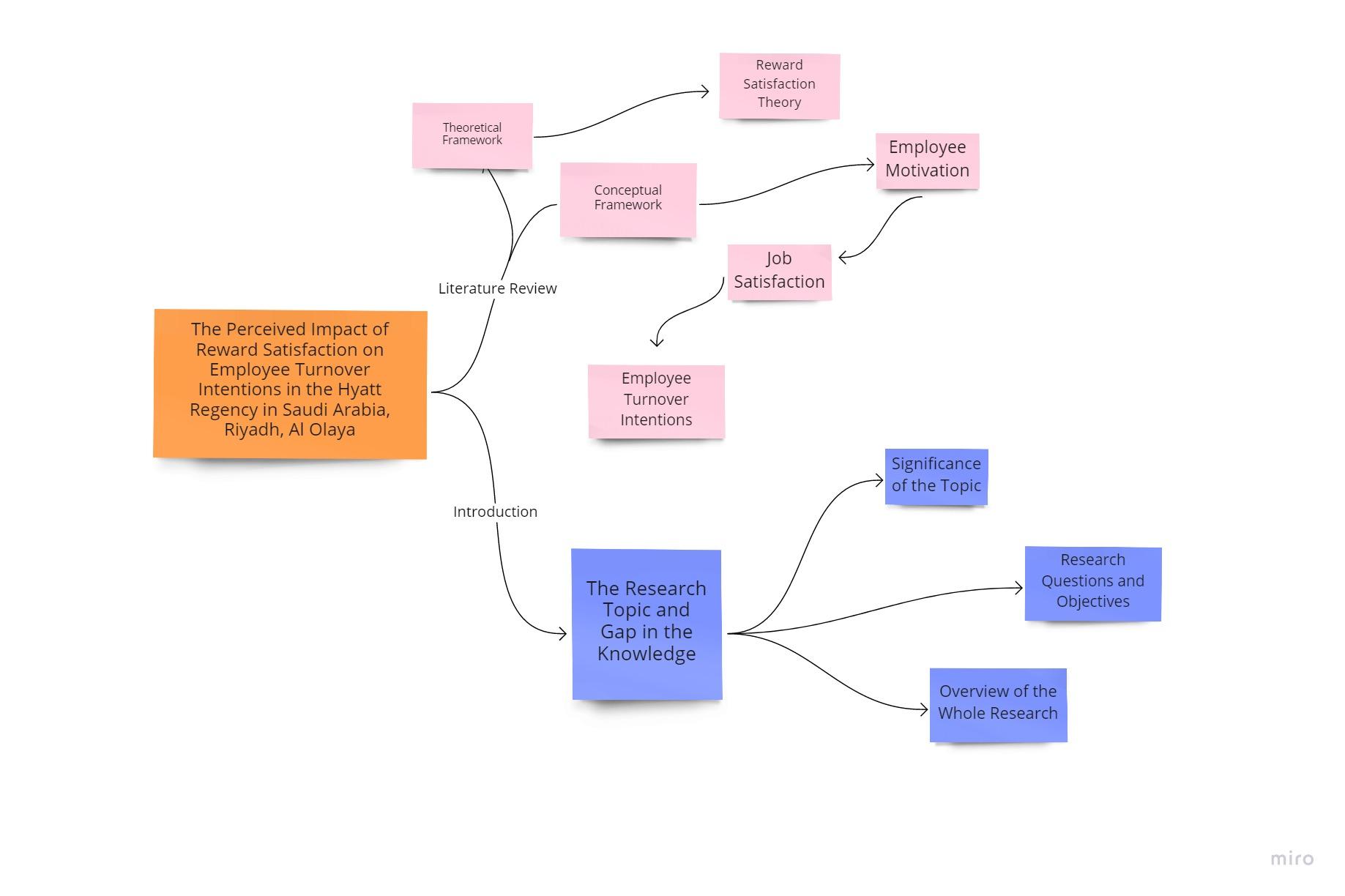
The critical sections of the research paper in each chapter are presented on the diagram: introduction and literature review. The literature review includes analysing the reward satisfaction concept, reward/need satisfaction theory (Byrne & Clore, 1970), a hierarchy of needs (Maslow, 1943), and turnover intention theories. To conclude this chapter, the conclusions and results were highlighted, and the recommendations list was created to implement this study further.
Conclusions
The first chapter, the introduction, presents the critical point of this research paper and outlines the following parts of the study. This investigation is based on theoretical concepts, the authors research, and empirical findings from the literature and other materials. This paper examines the impact of reward satisfaction on employee turnover intentions on the whole and particularly in the Hyatt Regency Riyadh. Furthermore, this research is significant since it produces the findings relevant for implementation in the hotel and resort operating by managers and executives. The received outcomes can contribute to enhancing the reward system and decrease in employee turnovers. The next chapter, the literature review, includes examining reward satisfaction concepts, employee turnover theories, and materials of other authors regarding the researched topic.
Literature Review
Introduction
In the modern world, to achieve corporational goals, management needs to realise the significance of employee motivation to contribute to the companys success. Therefore, it is vital to reward workers appropriately and cater to all their needs to create a comfortable work environment for them and eliminate the chances of them quitting to the other companies with the more profitable conditions (Mendis, 2017). However, it has been challenging for businesses in the hospital industry to fulfil the previous factors due to the global Covid-19 pandemic (Mendis, 2017). In addition, the workplaces have been shortened, and the tourism sphere has been negatively affected by travelling regulations resulting in fewer customers (Mendis, 2017).
Therefore, employee turnover is one of the most challenging issues in organisational environments today, especially in the hospitality industry (Mendis, 2017). The turnovers usually deteriorate the organisations quality as it is viewed as the one that cannot fulfil workers needs (Mendis, 2017). Consequently, nowadays, businesses seek ways to increase staff productivity and satisfaction with the workplace to keep high retention rates. Managers opt for creating reward systems that content employees from two perspectives: financial and non-financial. The rewards include the following concepts: material and financial (categorised as the financial aspect of the reward system), and psychological (a non-financial type of employee rewarding) (Mendis, 2017).
Theoretical Framework
Types of Employees Rewards and Their Significance
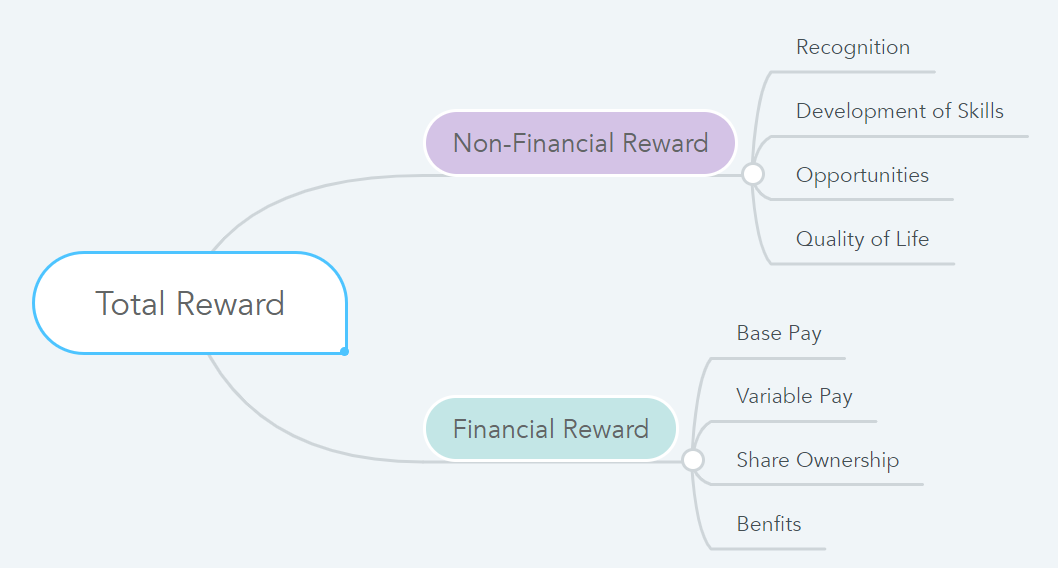
A reward system includes financial components and benefits and non-financial rewards such as feedback from managers and recognition for high-quality performance. In other words, the total reward system is a mix of incentives, employee perks, and non-financial aspects (Armrstrong, 2002). However, shown on the diagram, factors influence employee satisfaction with the workplace not similarly as they carry different meanings to the staff.
The pay level has an enormous impact on turnover intentions considering that people start seeking new job opportunities with higher salaries to satisfy their life needs. However, A’yuninnisa & Saptoto (2015) suggested that the pay level is more influential for employees than pay raises. Therefore, those workers content with their salary amount are less likely to search for a new workplace. Naeem et al. (2016) stated that when the payment decreases, the turnover intention increases vice-versa. As for the financial incentives, they are crucial for employees of the young age groups more than for older staff. Therefore, it is vital to cater to workers needs in the incentives scheme according to their age groups as this factor is not the most influential for the turnover intentions (Babangida et al., 2014). Consequently, businesses in the hospitality industry need to implement monetary and non-monetary incentive schemes to decrease turnovers.
However, work-life balance for everyone has a different meaning, and one usually sees it as the most comfortable way to combine career and free time without lacking both. For instance, Klopping (2011) defined the work-life balance as a measure of control where, when, and how individuals work. Nonetheless, the balance between life and work is understood differently due to not similar priorities, desires, dreams, and especially goals. Therefore, when someones career conflicts with family, hobbies, or personal life, the employee may start considering quitting the company to seek more comfortable conditions for ones wellbeing.
Psychological aspects of the reward system are also valuable since they contribute to the company’s comfortable and productive working environment. Maertz, Griffeth, Campbell & Allen (2007) concluded in their research that there is a strong connection between turnover intentions and supervisor support and recognition. The statement stems from the fact that when staff is appraised and encouraged for the performance by the managers, they feel valued and motivated in the organisation; hence have no desire to leave for another employer (Maertz et al., 2007). Furthermore, Gary Dessler (2011) also believes that credit from the top positively affects employees performance by motivating and inspiring them to work even harder and productively. Therefore, managers need to pay more attention to an individual’s mental well-being at work by recognising ones accomplishments, providing feedback regarding tasks, and supporting one with motivation.
The Relationship between Needs and Rewards of the Staff
The Reward/Need Satisfaction Theory according to Blyre and Clore (1970) is based on the fact that when a person is satisfied with something, one will return to it once again and never seek an alternative.
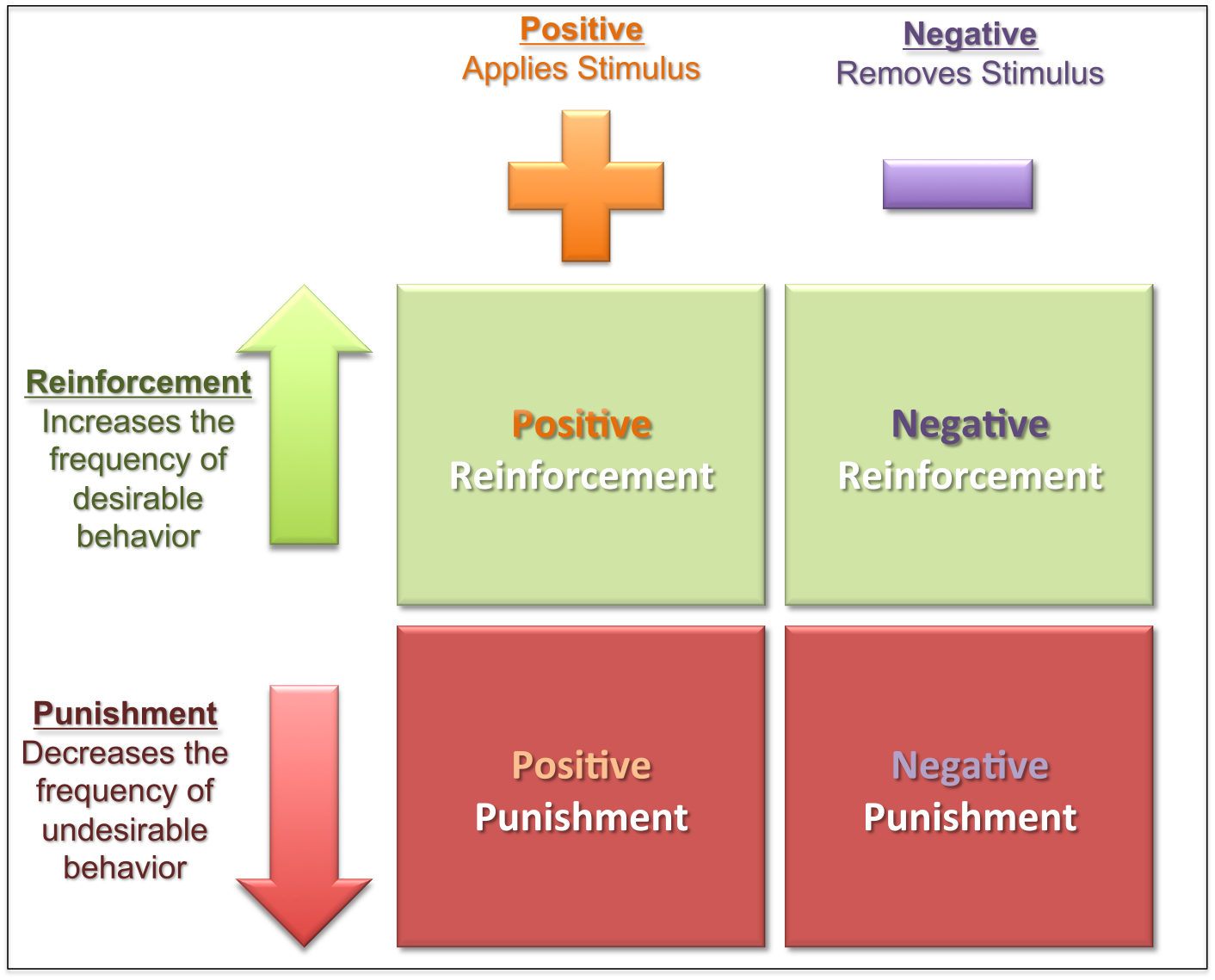
This concept can also be implemented in the working environment in the hospitality industry to see the effect of employees content with the position on the turnover intention, which would be positive. For instance, if a worker is satisfied with the company’s reward system, one will not seek other job opportunities and resign from the current position. However, positive punishment also seems vital in employee satisfaction. Thus, when an individual is disciplined fairly, it will not lead to an increase in turnover intention, though when the punishment is negative, it would most likely result in resigning of the worker.
Furthermore, managers need to get familiar with Bryne and Clores theory (1970) to understand the employees’ behaviour more accurately. This way, it is possible to alternate and enhance the reward systems at the companies to cater to workers needs so that turnover intentions can be considerably decreased. Overall, to create a comfortable working atmosphere at an organisation, executives must study human psychology and realise the opportunities for advancement regarding increasing productivity and motivation of staff.
A Hierarchy of Workers Needs in Relation to the Reward Satisfaction
Maslows model of needs is a valuable tool in understanding the means to motivate employees, not just in the hospitality industry. It presents the consequence of necessities that should be satisfied in the following direction: psychological needs, safety needs, love and belonging, esteem, and self-actualisation.
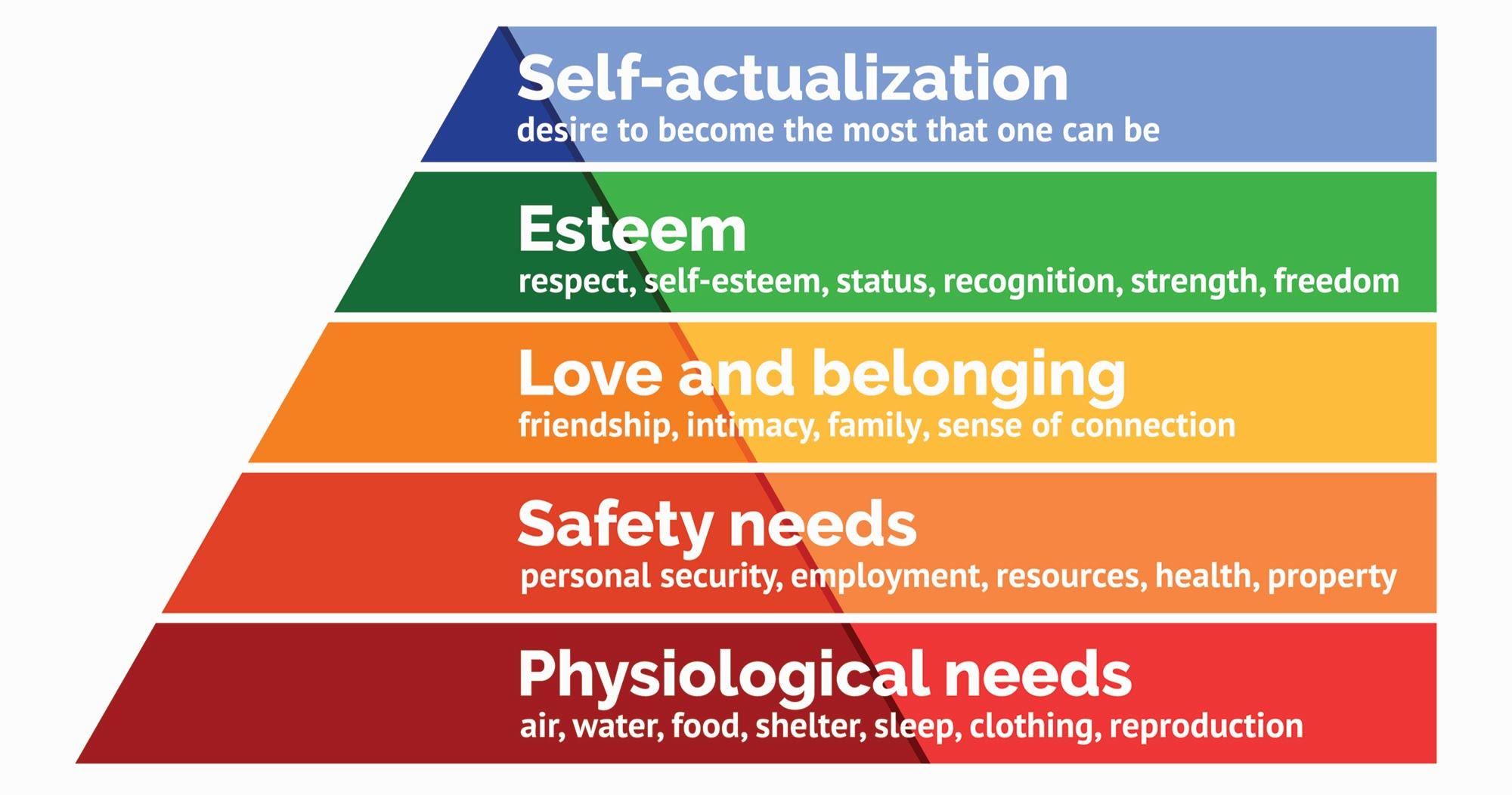
The concept can be also used by employers in the more specific scope, for instance, to evaluate employees satisfaction with the work and reward system in relation to this model.
To begin with, without fully fulfiling the previous needs, one cannot move to the next level; for instance, if one has not yet been self-realised in terms of love and belongings, it is impossible to work on one’s esteem (Sadri & Bowen, 2011). Therefore, companies can use this model to analyse the individual human behaviour to recognise an employee’s needs in terms of career and, consequently, cater to them.
Starting from the first level, which is the most crucial one for a person, it presents the psychological needs such as accommodation, food, and sleep, and wages can fulfil that. Thus, as was stated previously, the pay level becomes the first and foremost factor for a worker to be satisfied with one’s position (Benson & Dundis, 2003). It provides funds for maintaining these psychological necessities and enables a person to move to the next stage — safety needs. With adequate wages, an employee starts seeking safety on the job, both physical and mental. To provide a worker with a safe environment, a company needs to pay attention to producing contracts, benefits, and especially quality training. To be more precise, if an employee is surrounded by machinery, one needs to be taught how to use it properly (Stewart, Nodoushani & Stumpf, 2018). Therefore, when a business spends funds on the proper training, employees feel safe at the workplace and valued by the employers since they focus on their wellbeing.
The next stage of a needs hierarchy that an employee moves to is belonging in the social environment of the workplace. People seek satisfying relationships with their colleagues, peers, managers, and employers to feel appreciated and valued at work (Pulasinghage, 2010). Thus, when the working atmosphere seems stressful to a worker, one starts exploring other job opportunities to feel comfortable socially. Having created solid and pleasant connections with coworkers, one opts for increasing self-esteem. This concept includes the following factors: recognition, freedom, status, and respect (Maslow, 1943). This level is strongly connected to the psychological rewards at the workplace, such as recognition from the top, incentives, support, and encouragement. Thus, when an employee is appraised for a high-quality performance by managers and employers, ones self-esteem improves positively. Consequently, a worker becomes more motivated and productive in the work setting, which results in the companys overall success (Zalenski & Raspa, 2006). This way, staff receives even more incentives, benefits, and material rewards that, in turn, advance the first level of needs hierarchy, psychological necessities.
The last stage presented on Maslows model is self-actualisation, which is shown in the working settings as a desire to become a better employee and thrive more in the career. In other words, a worker starts to feel the need to advance skills, take more training, learn new things, take risks, and be confident in the position. As Maslow put it in his work regarding completing the last stage of his model, “Duty becomes pleasure and pleasure is merged with duty” (1943). This way, the career for a person becomes a pleasure, and this pleasure merges with duty.
Overall, it is evident that a hierarchy of needs is strongly related to various factors of the reward system. For instance, the financial rewards (wages, pay raises, and bonuses) contribute to fulfilling the psychological necessities of an employee. In contrast, psychological rewards play a pivotal role in improving ones self-esteem. All these reward types are connected and form a continuous process of a persons needs fulfilment according to Maslows model.
The Reasons for Employee Turnover Intentions

The mind map includes the most common reasons for resigning from the positions. However, in this chapter, other turnover intention theories were discussed, so that they can be implemented in further study stages.
As stated previously, the turnover rates rise when the employees are not satisfied with some aspects of their position. However, the most popular theory for turnover intention is The Theory of Organisational Equilibrium by March and Simon (1965). It presents the desire to leave the company after an employee has estimated one’s contribution to the organisation and, consequently, the organisation’s contribution to one’s life (Thomson, 2003; Brasher, 2016). In other words, a worker assesses the impact of one’s accomplishments and responsibilities on the business operating and whether the employers fairly reward them.
Another theory is mainly connected to social relationships at work — The Job Embeddedness Theory and was initially proposed by (Mitchell et al., 2001). This concept focuses on the significance of the social links with colleagues, managers, and employers in shaping one’s satisfaction with the work environment (Zhang, Fried & Griffeth, 2012). Therefore, the lack of solid relationships at the workplace increases employee turnover intentions.
Furthermore, Herzberg’s Two-Factor Motivation-Hygiene Theory presented by Herzberg (1966) concludes that job satisfaction depends mainly on the factors that increase motivation and those that contribute to the dissatisfaction. For instance, motivators such as responsibility, learning, investment in the process, and achievements are strongly connected to an employee’s job satisfaction (Ngo-Henha, 2018). However, the “hygiene factors” like unfair policies, unpleasant conditions, negative ways of punishment, and job insecurity contribute to the soar in turnover intentions (Herzberg, 1966; Chu & Kuo, 2015). Overall, the mix of both types of factors leads to the formation of an individual’s job satisfaction. Consequently, if the negative aspects outweigh the positive ones, an employee starts seeking new and more profitable job opportunities.
Conceptual Framework
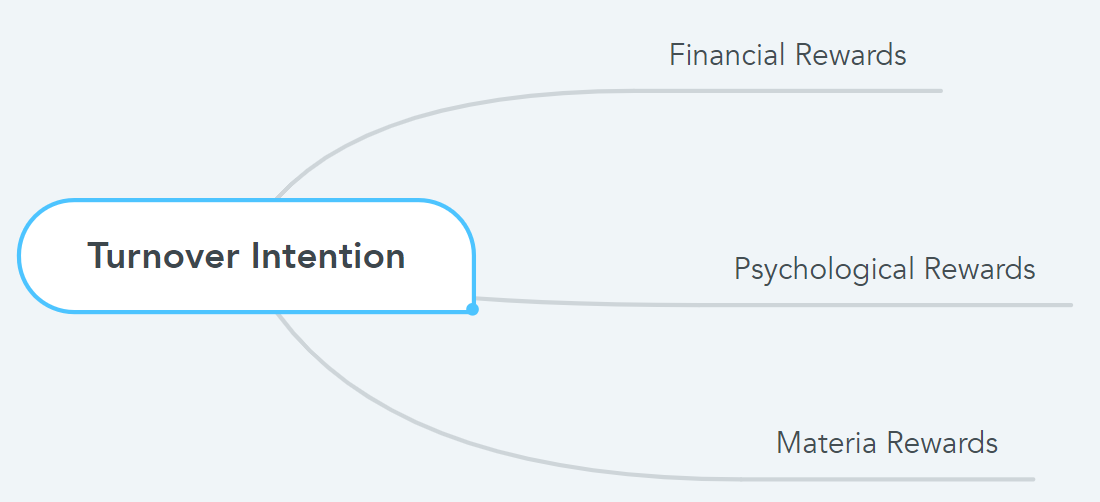
It was established that turnover intentions are influenced by satisfaction with the financial, material, and psychological rewards. Thus, these concepts were examined in this chapter to estimate their impact on turnover rates in the hospitality industry.
The Effect of Financial Rewards on Employee Turnover Intentions
As examined previously, financial rewards have an immense impact on employee turnover intentions. In other words, pay level, incentives, and pay rises contribute to the advancement of the psychological needs of an employee (Benson & Dundis, 2003). Therefore, if a person is not satisfied with one’s financial encouragement in work, one is more likely to be less productive and hardworking and eventually leave for better job opportunities. Overall, the staff’s satisfaction with the financial factor of the total reward system has a negative effect on turnover intentions.
In addition, cash incentives are one of the most crucial factors that motivate employees to improve their performance and contribute to the business success. The commitment of the staff to the company results in bigger chances of a business gaining competitive advantages on the global market and, consequently, advancing its setting financially and non-financially (Aktar, Sachu, & Ali, 2012). In other words, financial rewards are seen as the leading factor of an employee’s essential driving force (Rynes, Gerhart, & Minette, 2004). Consequently, when staff works hard and improves overall performance, they expect to yield fruitful benefits from their commitment to the organisation (Fapohunda, 2012). When employers are not financially valued for the challenging and demanding tasks, workers start feeling unvalued, and the satisfaction with the position considerably decreases.
Olawale and Olanrewaju (2016) believe that employees who are completely satisfied with their job bring joy, happiness, inspiration, and effective communication to the organisation’s working environment. On the contrary, an unhappy worker yields chaos, arguments, and quarrels in the working team, consequently affecting the overall staff community’s performance. Furthermore, it might result in the company’s strategy collapse and lead to the lack of opportunities to gain recognition on the global market.
Overall, when creating a business strategy for achieving success, companies should pay attention to employees satisfaction first (Olawale & Olanrewaju, 2016). It is possible to develop various incentive programs to motivate better performance at the workplace. For instance, organisations might implement the following rewarding programs like bonuses for the best worker of the month, incentives for employees who have done all their jobs faster than expected, and financial encouragement for staff who have not missed any deadline.
Such a motivating reward system might result in healthy competition at the workplace and keep employees at a productive and efficient pace (Olawale & Olanrewaju, 2016). Furthermore, the pay level should properly correlate with the amount of work an employee must complete during a month. Workers should be required to complete a questionnaire regarding their overall satisfaction with salary, incentive, and financial benefits they acquire to set a pay level for each employee fairly (Rynes, Gerhart, & Minette, 2004). However, organisations should not forget about constant pay rises if an employee is thriving and contributes to achieving the corporational goals of a company. By implementing previously mentioned methods, businesses may have a chance to decrease employee turnover intentions and keep high retention rates, respectively.
The Effect of Material Rewards on Employee Turnover Intentions
Material rewards play a pivotal role in enhancing the working environment and contributing to improving employees wellbeing (Koo et al., 2020). Fringe benefits packages allow workers to relax at the office and home or even on vacation. For instance, such perks as free playrooms, spa, and hotel accommodation are favourable for the workers in the hospitality industry as they enable them to alleviate stress from the arduous work without leaving the organisation. Therefore, when the staff uses such benefits together, it also influences their bonds and relationships by improving them (Mustafa & Ali, 2019; Liden, 1996). Consequently, it creates a more comfortable and pleasant environment for colleagues at the office, increasing their productivity and performance eventually.
Furthermore, employers should encourage employees high-quality performance with material rewards like free vacations, new experiences (diving, bungee jumping, parachuting, and salsa), and healthcare programs. Workers would have an opportunity to relax and reduce the tension by attempting new sports, hobbies, which they might become interested in eventually (Koo et al., 2020). Paid vacations are also a fruitful benefit for staff since they might visit new countries, get familiar with their culture, and even acquire new knowledge abroad (Koo et al., 2020).
In addition, employers should implement healthcare programs in every respected organisation in the hospitality industry to improve employees health (Koo et al., 2020). This way, employers might examine employees health, which sometimes can be worsened due to the hard work. Therefore, this data can be implemented to improve the workers health by easing one’s responsibilities or reducing the number of tasks that should be completed monthly.
Sometimes, executives provide workers with opportunities for self-growth at the workplace, which is also pleasant for the staff since they feel valued and appreciated in the company (Mustafa & Ali, 2019). Moreover, employers benefit from such perks due to the advancement of staff skills through various training and new technologies. Consequently, it contributes to the overall success as employees improve the last stage of Maslow’s hierarchy of needs, self-actualisation, which drives them to be even more productive and achieve desired goals (Maslow, 1943; He, Yuan & Peng, 2011). In other words, it can be concluded that such types of perks yield advantages both for staff and the organisation itself (He, Yuan & Peng, 2011).
However, other attractive lavish perks can be implemented in the company to enhance the working environment and, therefore, reduce turnover intentions, such as movie day in the office to improve relationships between colleagues and team off-sites to strengthen the team spirit (Haden). For instance, on Lazy Monday Mornings, employees can spend time together at the office and be engaged in activities together that are not related to the work (Haden). Moreover, employees can be allowed to spend a certain amount of days a month working from home, where they feel comfortable and calm (Haden).
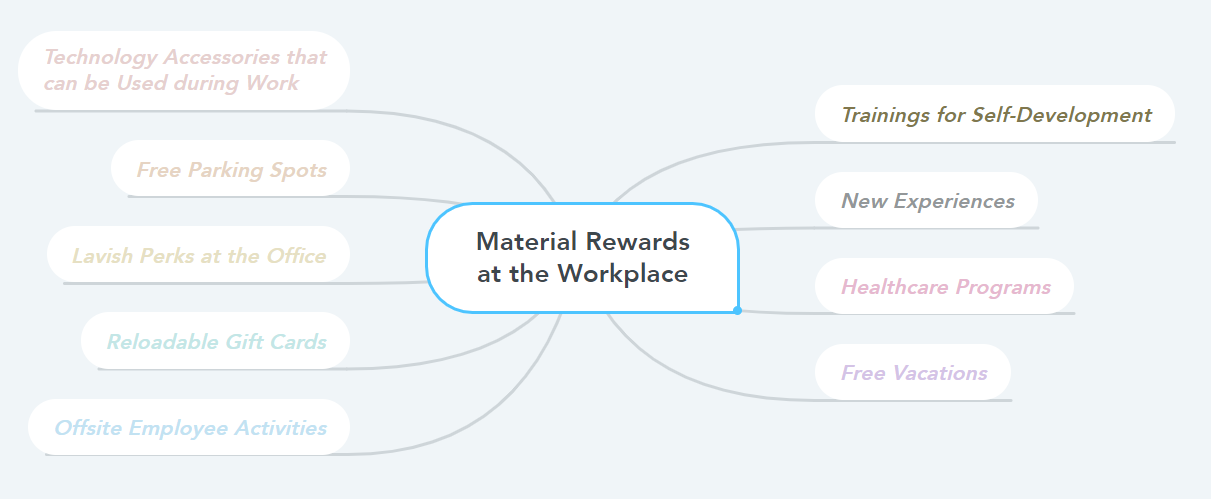
The mind map presents the examples of material rewards that are implemented in the reward system and how they affect the turnover intentions.
Overall, the fringe benefit packages enhance the working environment, which is crucial for one’s well being according to the third level of Maslow’s model, love and belongings (1943). It is evident that when workers feel appreciated in the team and have fewer factors negatively affecting the working settings, their performance considerably increases and results in the advancement of financial rewards (Bentein et al., 2005). That is why material rewards are strongly connected to financial ones, and both positively contribute to job satisfaction, which considerably decreases employee turnover intentions.
The Effect of Psychological Rewards on Employee Turnover Intentions
As for the psychological rewards, they tend to enhance the mental well-being of employees at work. Therefore, they start feeling less unease, anxiety, and anger while communicating with colleagues and completing the tasks. Supervisors should focus on giving feedback, supporting, encouraging, and assisting employees during their workdays (Fazio, 2017). This way, staff might become more self-confident since they would be able to examine their mistakes in some responsibilities and consequently, fix them to enhance their further performance.
Moreover, it is vital to create such an atmosphere where employees feel valued and appreciated by employers who can sometimes show them the right direction or even help them. During the work, it is crucial for staff to see the concern from the top as it motivates them and completes the fourth level of Maslow’s model, self-esteem (1943). Employers consider incorporating different employee enhancing therapies within the workplace environment. For instance, it is reasonable to hire a psychologist and counsellor who could help the workers with problems related to their personal life and working settings (Islam, Ali & Ahmed, 2018). Such a method might enhance psychological rewards as employees would see that executives are concerned about their mental health and well-being (Rubel & Kee, 2015). Overall, if an individual feels satisfied and at peace in the working environment, one less likely might quit the current organisation as stated in The Job Embeddedness Theory proposed by Mitchell et al. (2001).
Conclusions
To sum up, the impact of the reward system on employee turnover intention was thoroughly researched in this paper. The financial and material factors are firmly connected and dependent on one another as they provide employees with psychological necessities, love, and belongings, which are crucial for ones well-being (Maslow, 1943). Moreover, the financial rewards serve as reassurance and assistance from the supervisors side regarding workers achievements. Recognition and positive feedback also contribute to the staff feeling valued and appreciated in the organisation (Fazio, 2017). Therefore, the three aspects of the total reward system influence employees satisfaction with the job. In other words, if workers are content with their pay level, fringe benefit packages, and supervisors attention, they are less likely to start seeking new job opportunities with more profitable conditions. Overall, companies should focus on enhancing the reward system and catering to the staff’s needs to decrease turnover intentions. As for the third chapter, Methodology, it is designed to highlight research strategy, approach, and design. Moreover, it includes the ethical considerations, reliability, validity, and the study limitations.
Reference List
Aktar, S., Sachu, M. K., & Ali, M. E. (2012). ‘The impact of rewards on employee performance in commercial banks of Bangladesh: an empirical study’. IOSR Journal of Business and Management, 6(2), 9-15. Web.
Armstrong, M. (2002). ‘Employee reward’. CIPD Publishing.
A’yuninnisa, R. N., & Saptoto, R. (2015). ‘The effects of pay satisfaction and affective commitment on turnover intention’. International Journal of Research Studies in Psychology, 4(2), 57-70. DOI:10.5861/ijrsp.2015.1055
Babangida, M. M., Ibrahim, A. and Abubakar, B. (2014). ‘Effect of Motivational Incentives on Staff Turnover in Hotel’. IOSR Journal of Business and Management (IOSR-JBM), 16(3), 36-42. Web.
Benson, S. G., & Dundis, S. P. (2003). ‘Understanding and motivating health care employees: integrating Maslow’s hierarchy of needs, training and technology’. Journal of nursing management, 11(5), 315-320. DOI:10.1046/j.1365-2834.2003.00409.x
Bentein, K., Vandenberghe, C., Vandenberg, R., & Stinglhamber, F. (2005). ‘The role of change in the relationship between commitment and turnover: a latent growth modeling approach’. Journal of Applied Psychology, 90(3), 468. DOI:10.1037/0021-9010.90.3.468
Brasher, E. E. (2016). ‘You can’t always get what you want: developing and validating measures of leaving preference and perceived control’ (Doctoral dissertation, Ohio University).
Bryne, D., & Clore, G.L. (1970). ‘A reinforcement model of evaluative responses’. Personality, 1, 103-128.
‘Bryne and Clores Reward/Need Satisfaction Theory, 1970’ [Figure 5] [Online]. Web.
Curtis, M. ‘What is Turnover Intention?’ Web.
Chu, H. C., & Kuo, T. Y. (2015). ‘Testing Herzberg’s two-factor theory in educational settings in Taiwan’. The Journal of Human Resource and Adult Learning, 11(1), 54-65.
‘Corporate Responsibility at Hyatt’. Web.
De Gieter, S., De Cooman, R., Pepermans, R., & Jegers, M. (2010). ‘The Psychological Reward Satisfaction Scale: developing and psychometric testing two refined subscales for nurses’. Journal of Advanced Nursing, 66(4), 911-922. doi:10.1111/j.1365-2648.2009.05199.x
Fapohunda, T. M. (2012). ‘Pay disparity and pay satisfaction in public and private universities in Nigeria’. European Scientific Journal, 8(28), 120-135.
Fazio, J., Gong, B., Sims, R., & Yurova, Y. (2017). ‘The role of affective commitment in the relationship between social support and turnover intention’. Management Decision. DOI:10.1108/md-05-2016-0338
‘First Hyatt Regency Hotel Opens in the Heart of Riyadh’ (2017).
Gary Dessler, B. V. (2011). ‘Human Resource Management’ (12th ed.). Florida International University
Haden, J. ‘25 Rewards that Great Employees Actually Love to Receive’. Web.
He, H. T., Yuan, Y. Z., & Peng, J. S. (2011). ‘Does Investment in Employee Development Pay off? The Impact of Developmental Human Resources Practices on Knowledge Sharing Behavior and Turnover Intention’. Management Review, 1(23), 75–85.
Herzberg, F. I. (1966). ‘Work and the Nature of Man’.
Hyatt Regency (2021). World of Hyatt. [Figure 1] [Online].
Islam, T., Ali, G., & Ahmed, I. (2018). ‘Protecting healthcare through organizational support to reduce turnover intention’. International Journal of Human Rights in Healthcare. DOI:10.1108/ijhrh-03-2017-0012
Jahan, S. ‘Definitions of Reward Systems’.
Klopping, L. (2011). ‘Work-Life Balance’. Norderstedt, Germany: Druck and Binding.
Koo, B., Yu, J., Chua, B. L., Lee, S., & Han, H. (2020). ‘Relationships among emotional and material rewards, job satisfaction, burnout, affective commitment, job performance, and turnover intention in the hotel industry’. Journal of Quality Assurance in Hospitality & Tourism, 21(4), 371-401. DOI:10.1080/1528008X.2019.1663572
Liden, R. C. (1996). ‘Social exchange in organizations: Perceived organizational support, leader-member exchange, and employee reciprocity’. Journal of Applied Psychology, 81(3), 219–227. DOI:10.1037/0021-9010.81.3.219
Maertz, C. P., Griffeth, R. W., Campbell, N. S., & Allen, D. G. (2007). ‘The effects of perceived organizational support and perceived supervisor support on employee Turnover’. Journal of Organizational Behavior, 28(8), 1059-1075.
March, J. G., & Simon, H. A. (1965). ‘Organisations’.
Maslow, A. H. (1943) ‘Conflict, frustration, and the theory of threat’. In Contemporary psychopathology (pp. 588-594). Harvard University Press.
McLeod, S. (2020) ‘Maslow’s Hierarchy of Needs’. [Figure 6] [Online].
Mendis, M. V. S. (2017) ‘The impact of reward system on employee turnover intention: a study on logistics industry of Sri Lanka’. International Journal of Scientific & Technology Research 6.9: 67-72.
Mitchell, T. R., Holtom, B. C., Lee, T. W., Sablynski, C. J., & Erez, M. (2001). ‘Why people stay: Using job embeddedness to predict voluntary turnover’. Academy of management journal, 44(6), 1102-1121. DOI:10.5465/3069391
Mustafa, G., & Ali, N. (2019). ‘Rewards, autonomous motivation and turnover intention: Results from a non-Western cultural context’. Cogent Business & Management, 6(1). DOI:10.1080/23311975.2019.1676090
Naeem, A., Abdul, W. A. A., Muhammad, A. A, Sohail, S., Sajid, A. & Muhammad, Q. (2016). ‘Impact of Job Satisfaction & Remuneration on Turnover Intention: A Survey of (Private) Schools of (Okara) Pakistan’. International Review of Management and Business Research, 5(2), 653-675.
Ngo-Henha, P. E. (2018). ‘A review of existing turnover intention theories’. International Journal of Economics and Management Engineering, 11(11), 2760-2767. DOI:10.5281/zenodo.1316263
‘Non-Financial Incentives for Employees’ (2018). Web.
Olawale, R., & Olanrewaju, I. (2016). ‘Investigating the influence of financial reward on Lagos State University staff turnover intention’. European Scientific Journal, 12(10). DOI:10.19044/esj.2016.v12n10p161
Pulasinghage, C. (2010). ‘Employee Motivation: What Factors Motivate Employees to Work in Nongovernmental Organizations (NGO) in Sri Lanka: A Study According to Maslow’s Hierarchy of Needs Model’. International Journal of Interdisciplinary Social Sciences, 5(4).
Rubel, M. R. B., & Kee, D. M. H. (2015). ‘High commitment compensation practices and employee turnover intention: Mediating role of job satisfaction’. Mediterranean Journal of Social Sciences, 6(64), 321. DOI:10.36941/mjss
Rynes, S. L., Gerhart, B., & Minette, K. A. (2004). ‘The importance of pay in employee motivation: Discrepancies between what people say and what they do’. Human resource management, 43(4), 381-394. DOI:10.1002/hrm.20031
Sadri, G., & Bowen, C. R. (2011). ‘Meeting employee requirements: Maslow’s hierarchy of needs is still a reliable guide to motivating staff’. Industrial engineer, 43(10), 44-49.
Stewart, C., Nodoushani, O., & Stumpf, J. (2018). ‘Cultivating employees using Maslow’s hierarchy of needs’. In Competition Forum (Vol. 16, No. 2, pp. 67-75). American Society for Competitiveness.
‘The Story’ (2021). Web.
Thomson, S. B. (2003). ‘The role of community in the retention/attachment process: a qualitative study of the embeddedness model’. Lethbridge, Alta: University of Lethbridge, Faculty of Management, 2003.
‘What is a Financial Incentive?’
‘World of Hyatt’ (2021). Web.
Zalenski, R. J., & Raspa, R. (2006). ‘Maslow’s hierarchy of needs: a framework for achieving human potential in hospice’. Journal of palliative medicine, 9(5), 1120-1127. DOI:10.1089/jpm.2006.9.1120
Zhang, M., Fried, D. D., & Griffeth, R. W. (2012). ‘A review of job embeddedness: Conceptual, measurement issues, and directions for future research’. Human Resource management review, 22(3), 220-231. DOI:10.1016/j.hrmr.2012.02.004

